In today’s dynamic retail environment, Tesco must thoroughly understand its strengths and weaknesses. This clarity enables the company to maintain its competitive edge and adapt to ever-changing market conditions.
A 2024 SWOT analysis provides an invaluable tool for Tesco’s management, allowing them to make informed decisions that align with the company’s strategic goals. By thoroughly evaluating internal capabilities, Tesco can identify areas of improvement and leverage its strengths to gain a competitive advantage.
Additionally, a comprehensive SWOT analysis helps Tesco manage external factors that affect its operations. By evaluating market opportunities, Tesco can capitalize on emerging trends and expand its market presence.
Similarly, understanding potential threats allows Tesco to develop strategies to mitigate risks and address challenges proactively. This forward-thinking approach ensures that Tesco remains resilient and poised for future success in a highly competitive retail environment.
Tesco Overview

History
Tesco was founded in 1919 by Jack Cohen in London, England, originally as a group of small grocery stores. Over the years, Tesco grew into a supermarket giant, expanding throughout the UK and internationally.
In 1997, Tesco acquired Cathers Brothers, a major grocery chain, solidifying its position as the UK’s largest supermarket chain.
Key Metrics and Statistics
Tesco is one of the world’s largest grocery retailers, with stores in several countries. It currently has stores in five countries: the United Kingdom, Ireland, the Czech Republic, Hungary, and Slovakia.
In the past, Tesco had operations in many other countries, but it has since exited those markets. As of 2021, it employed over 300,000 people worldwide, and its revenue in 2022 was around £54 billion.
Activities
Tesco operates various stores, including supermarkets, hypermarkets, convenience stores, and petrol filling stations. It also offers various online services, including grocery home delivery and click-and-collect.
Achievements
Tesco was a pioneer in introducing barcode technology in supermarkets. It has been credited with revolutionizing the grocery shopping experience in the UK by offering lower prices and a wider variety of products.
Main Competitors
Tesco’s main competitors in the UK include Sainsbury’s, Asda, Morrisons, and Lidl. Internationally, Tesco competes with other major grocery retailers such as Walmart, Kroger, and Carrefour.
Suppliers
Tesco has a vast network of suppliers that provide it with a wide range of grocery and general merchandise products. Tesco works closely with its suppliers to ensure that it can offer its customers competitive prices and high-quality products.
Customers
Tesco’s customer base is extensive and includes people from all walks of life. To cater to the needs of its diverse customer base, Tesco offers a variety of products and services.
Strategy
Tesco’s strategy is focused on providing its customers with low prices, a wide variety of products, and convenient shopping experiences. In recent years, Tesco has also been focusing on growing its online business and expanding its international presence.
SWOT analysis of Tesco
We now turn to the results of Tesco’s SWOT analysis:
The internal analysis of Tesco
The main goal of an internal analysis for Tesco is to gain a deep understanding of its strengths and weaknesses, by evaluating its internal factors.
This self-assessment helps Tesco management make informed decisions and develop effective strategies for the future.
Strengths of Tesco
Tesco holds several key strengths compared to its competitors in the UK market:
Market Leadership:
According to Investopedia, Tesco has the largest market share in the UK grocery sector, at around 27% as of April 2023. This translates to a wider brand recognition and customer base.
Extensive Network:
Tesco has a vast network of stores in different formats. These include large Tesco Extras, convenient Tesco Express locations, and even wholesale stores under the Booker brand.
This variety enables Tesco to meet diverse shopping needs and locations, reaching more customers than competitors with a more limited physical presence.
Loyalty Program Powerhouse:
According to Statista, Tesco Clubcard is considered the UK’s leading loyalty program, with over 22 million active users and nearly 300 million coupons issued in the past year (as of February 2024).
This strong loyalty program boosts customer retention and encourages repeat business.
Efficient Supply Chain:
Tesco leverages its large size to negotiate better deals with suppliers, which translates to competitive pricing for consumers. This efficient supply chain also allows them to offer a wider variety of products while maintaining good quality.
Innovation Focus:
Tesco is constantly innovating to stay ahead of the curve. Examples include its “Whoosh” service, which offers rapid one-hour grocery delivery in select markets. This service demonstrates its commitment to adapting to changing consumer preferences.
Value for money:
Tesco offers a good balance between affordability and quality for many products. Their own-brand lines can be particularly attractive for budget-conscious shoppers.
Convenience:
Tesco has a variety of store formats, from large Tesco Extras with everything under one roof to smaller Tesco Express locations ideal for quick grocery pick-ups. This makes them accessible for different shopping needs.
Product selection:
Tesco offers a wide range of products, including groceries, clothing, homeware, and more. This one-stop-shop convenience is a big draw for many.
Weaknesses of Tesco
Tesco faces some weaknesses compared to some direct competitors in the UK market:
Price Perception:
While Tesco offers good value, discount grocers like Lidl and Aldi are known for their relentless focus on rock-bottom prices. Kantar Worldpanel data shows Lidl and Aldi growing their market share significantly, partly due to their price competitiveness.
Brand Image:
Compared to some competitors, Tesco might not have the strongest brand image for specific areas. For instance, Waitrose might be seen as a more premium option, while Amazon Fresh might be preferred for pure convenience.
Online Presence:
While Tesco offers online grocery shopping, Amazon has a significant advantage due to its established e-commerce infrastructure and established customer base accustomed to online shopping.
This can be a disadvantage for those who prefer the ease of online grocery ordering.
Store Experience:
While Tesco offers various store formats, some competitors might excel in specific areas. For example, Aldi and Lidl stores are known for their efficient layouts and focus on essential items, leading to faster shopping trips for some customers.
Profitability:
Tesco’s profit margins might be lower than those of some discount grocers like Aldi and Lidl. These companies prioritize lower costs and higher throughput over maximizing profit per item. This can limit Tesco’s resources for further investment or price reductions.
The external analysis of Tesco
The primary objective of conducting an external analysis for Tesco is to understand external factors beyond its control that could influence its success in the global retail industry.
This analysis helps Tesco management in making well-informed decisions regarding its strategy, operations, and future trajectory. The external analysis delves into two main aspects: opportunities and threats.
Let’s move on to Tesco’s current and potential opportunities and threats without further ado.
Opportunities of Tesco
Tesco has a chance to capitalize on several exciting opportunities in the UK retail market:
Growth in Online Grocery:
The online grocery market in the UK continues to show strong growth. Tesco can leverage its existing infrastructure and Clubcard loyalty program to capture a larger share of this growing market segment.
Convenience Shopping:
Consumers are increasingly looking for convenient shopping experiences. Tesco can expand its “Click and Collect” services and explore rapid delivery options like “Whoosh” to cater to this need.
Focus on Private Label:
Tesco’s own-brand lines offer good value and can be a major selling point during economic downturns. Focusing on innovation and quality within these private label ranges can attract cost-conscious customers.
Sustainability Push:
Consumers are increasingly environmentally conscious. Tesco can capitalize on this by offering more sustainable products, reducing packaging waste, and highlighting its eco-friendly initiatives.
Subscription Services:
Subscription boxes for groceries or meal kits are gaining popularity. Tesco could offer curated subscription boxes to satisfy specific dietary needs or preferences.
Data-Driven Personalization:
Tesco can benefit from huge customer data to personalize promotions and offers, enhancing the shopping experience and driving loyalty.
Tech Integration:
Integrating technology in-store through self-checkout options or interactive displays can improve efficiency and customer experience.
Leveraging AI for Enhanced Decision-Making at Tesco:
Tesco managers can leverage AI in several ways to enhance their decision-making and operations. AI can analyze sales data, customer trends, and external factors to predict product demand, leading to better inventory management and optimized ordering and shelf space allocation.
It can also suggest optimal pricing strategies by analyzing competitor pricing, real-time demand, and product lifecycles, helping Tesco maximize profits while staying competitive.
Additionally, AI can create targeted promotions and discounts by analyzing customer purchase history and loyalty program data, increasing customer satisfaction and driving repeat business.
It can also predict peak hours and suggest optimal staff scheduling based on customer traffic patterns and staffing levels, leading to improved efficiency and customer service.
Furthermore, AI can detect fraud by analyzing transaction data and identifying patterns indicative of fraudulent activity, minimizing financial losses.
AI also enhances supply chain optimization by analyzing logistics data to identify inefficiencies, resulting in improved delivery routes, reduced transportation costs, and faster product delivery times.
Lastly, AI can inform Tesco’s product development strategy by analyzing customer preferences and buying habits to identify trends and predict future demand for specific products.
By effectively utilizing AI, Tesco managers can gain valuable insights, automate tasks, and make data-driven decisions that improve efficiency, profitability, and customer satisfaction.
Threats of Tesco
Tesco is encountering various challenges in the competitive UK retail market. Here’s a breakdown of the current and potential threats:
Intense Competition:
The UK grocery sector is highly competitive, with discount grocers like Aldi and Lidl steadily gaining market share. To stay ahead, Tesco needs to constantly innovate and offer good value.
Rising Costs:
Inflation and increasing production and transportation costs can squeeze Tesco’s profit margins. Tesco needs to manage costs efficiently while keeping prices attractive to customers.
Changing Consumer Preferences:
Consumer preferences are constantly evolving, with a growing focus on healthy eating, sustainability, and convenience. Tesco needs to adapt its product offerings and store formats to meet these changing demands.
Labour Shortages:
The UK retail sector has faced labour shortages, which have impacted Tesco’s ability to fully staff stores and potentially affected customer service.
Economic Downturn:
A potential economic downturn like the COVID-19 crisis could lead to reduced consumer spending, impacting Tesco’s sales.
Supply Chain Disruptions:
Global events or geopolitical tensions can disrupt supply chains, leading to stockouts and potentially higher prices for Tesco.
Cybersecurity Threats:
As Tesco relies heavily on online platforms and data management, cyberattacks pose a significant risk. Data breaches can damage reputation and lead to financial losses.
Technological Disruption:
New technologies, such as autonomous delivery vehicles or automated stores, could disrupt the traditional retail model, forcing Tesco to adapt and invest in innovation.
Regulation Changes:
Changes in government regulations, like those related to online sales or environmental practices, could impose additional costs or restrictions on Tesco’s operations.
Tesco SWOT analysis matrix
To summarize the results of the Tesco SWOT analysis, we present the following SWOT matrix:

Conclusion
In conclusion, Tesco, a dominant player in the UK retail market, holds a robust position with a wide-reaching network, dedicated customer base, and efficient supply chain.
Despite its strengths, challenges such as price competitiveness, localized brand perception issues, and evolving online strategies require careful navigation.
However, opportunities to expand online grocery services, enhance convenience shopping options, and advance private label offerings present promising avenues for growth.
Looking ahead, Tesco can strategically utilize AI technologies to strengthen its operational capabilities. AI-powered solutions offer potential benefits in demand forecasting, targeted promotions through Clubcard insights, and workforce management optimization.
These initiatives align with Tesco’s goal of effectively adapting to changing consumer behaviours and market dynamics.
To sustain its leadership in the competitive landscape, Tesco should consider strategic initiatives such as supporting online grocery services with faster delivery options and personalized promotions.
Improving the in-store experience through innovations like self-checkout systems and optimized store layouts can enhance customer convenience and satisfaction.
Additionally, championing private label innovation by developing high-quality products that meet evolving consumer preferences for health and sustainability will further differentiate Tesco in the marketplace.
Utilizing AI technologies in its operations can help Tesco improve agility and efficiency while also reducing risks associated with economic fluctuations and changing consumer preferences.
These strategic moves will position Tesco for sustained growth and resilience in the dynamic UK retail market.
Read also: PESTEL analysis of Tesco in 2024.
SWOT Analysis Examples 2024
There is no better way to understand how to conduct a SWOT analysis at your company than with a concrete example.
Below you will find our free, up-to-date, and concrete examples of SWOT analyses of large companies and multinationals conducted in 2024.

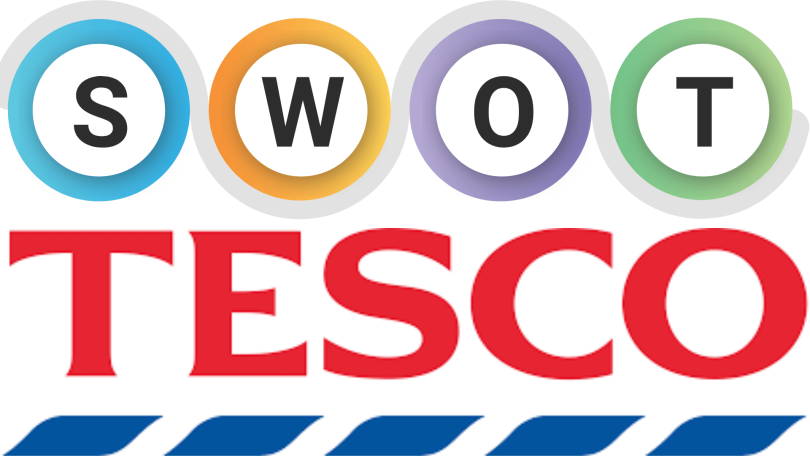
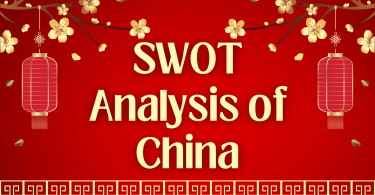
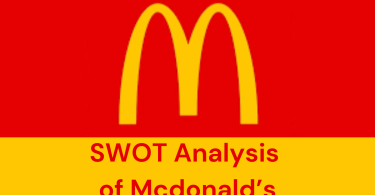

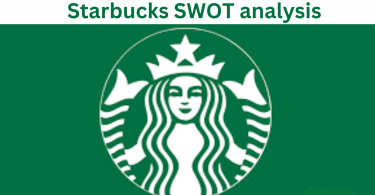




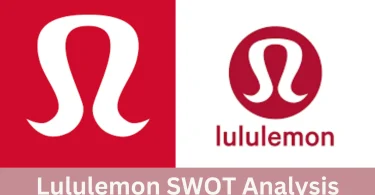

Leave a Comment